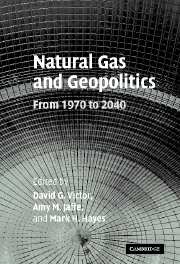Book contents
- Frontmatter
- Contents
- List of figures
- List of tables
- List of boxes
- List of contributors
- Foreword by James A. Baker, III
- Acknowledgments
- List of acronyms and abbreviations
- Part I Introduction and context
- 1 Introduction to the study
- Part II Historical case studies
- Part III International gas trade economics
- Part IV Implications
- Appendix: Technical notes
- Index
- References
1 - Introduction to the study
Published online by Cambridge University Press: 22 September 2009
- Frontmatter
- Contents
- List of figures
- List of tables
- List of boxes
- List of contributors
- Foreword by James A. Baker, III
- Acknowledgments
- List of acronyms and abbreviations
- Part I Introduction and context
- 1 Introduction to the study
- Part II Historical case studies
- Part III International gas trade economics
- Part IV Implications
- Appendix: Technical notes
- Index
- References
Summary
Natural gas is rapidly gaining importance in global energy markets. Prized for its relatively clean and efficient combustion, gas is becoming the fuel of choice for a wide array of uses, notably the generation of electric power. Natural gas is projected to be the fastest-growing major source of primary energy over the coming decades, with global consumption increasing nearly two-fold by 2030 (EIA 2004; IEA 2004). In the next few years, gas will surpass coal to become the world's second most important energy source; by 2050 gas could surpass oil to occupy the number one slot. Recent price increases do not fundamentally challenge the economic viability of this robust gas future.
There is plenty of gas to satisfy these visions of global gasification. The broadest measure of gas available totals about 350 trillion cubic meters (Tcm), or roughly 130 years at today's rate of consumption (USGS 2000). Even “proved reserves,” a narrower measure of just the gas that has been detected and is commercial to develop using today's technology, suggest that scarcity is unlikely to impede a global shift to gas. The widely referenced BP Statistical Review of World Energy reports 176 Tcm of proved gas worldwide, or nearly 70 years at current production levels (BP 2004).
The geographical, financial and political barriers to gas development, however, will be harder to clear.
- Type
- Chapter
- Information
- Natural Gas and GeopoliticsFrom 1970 to 2040, pp. 3 - 24Publisher: Cambridge University PressPrint publication year: 2006
References
- 2
- Cited by



